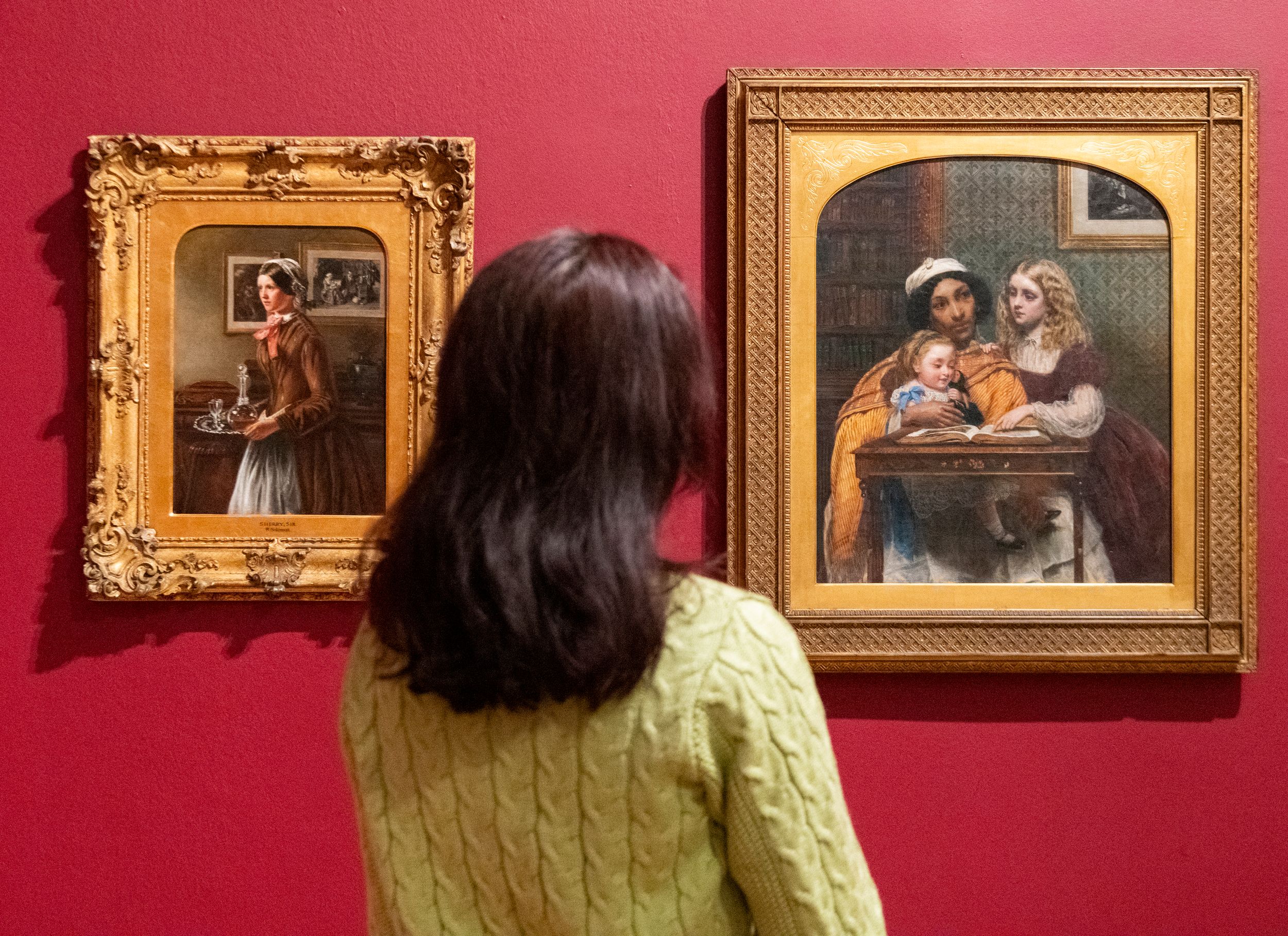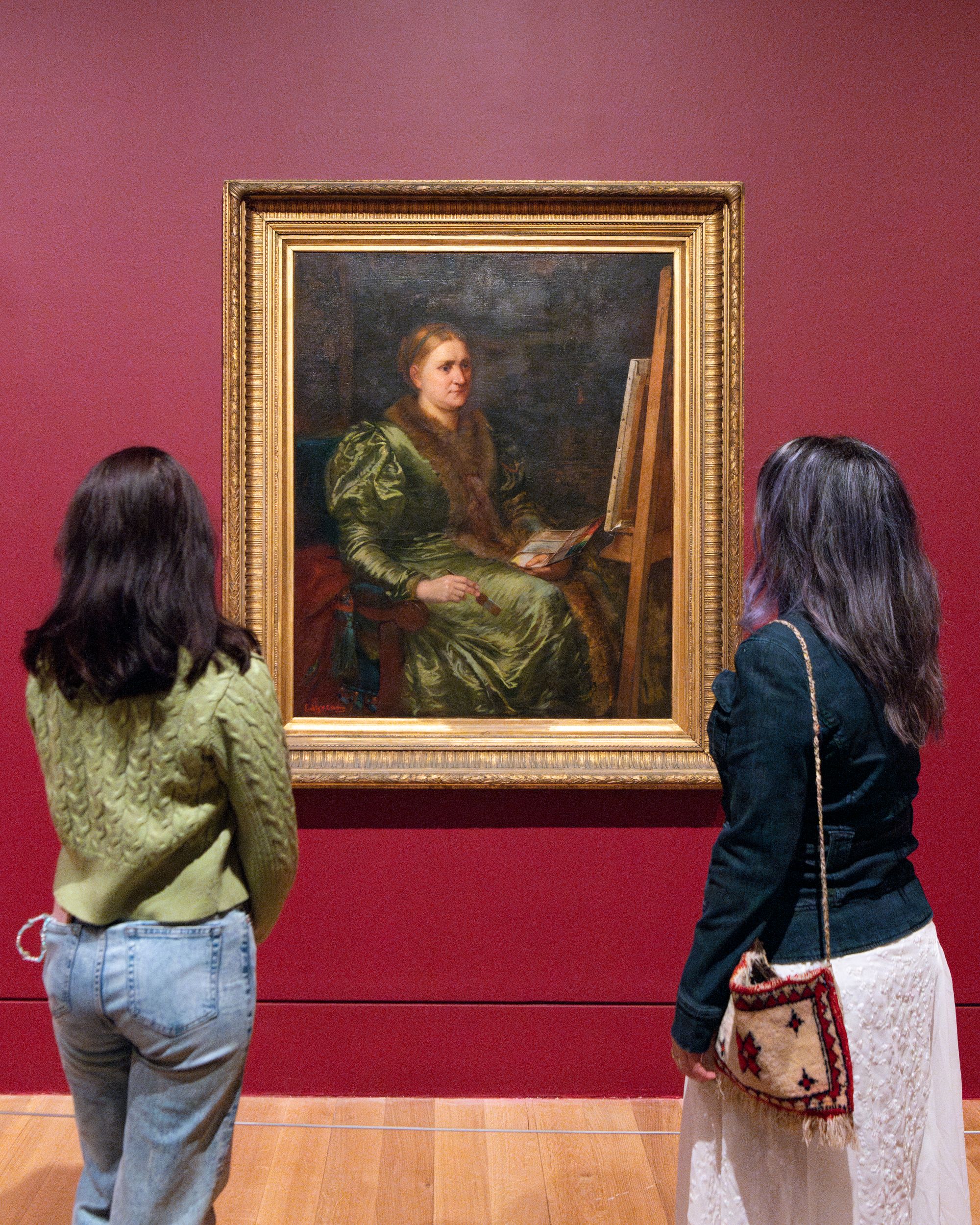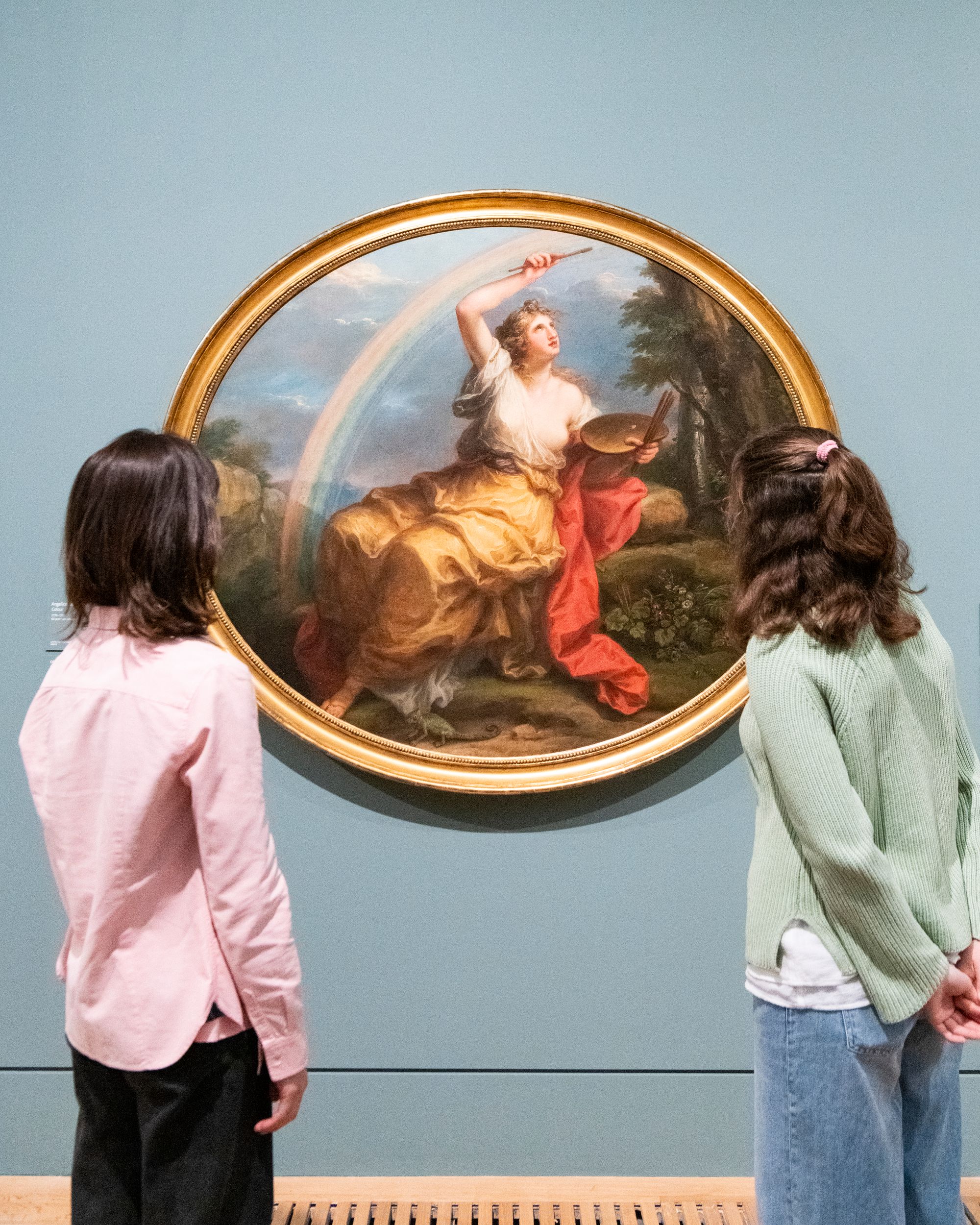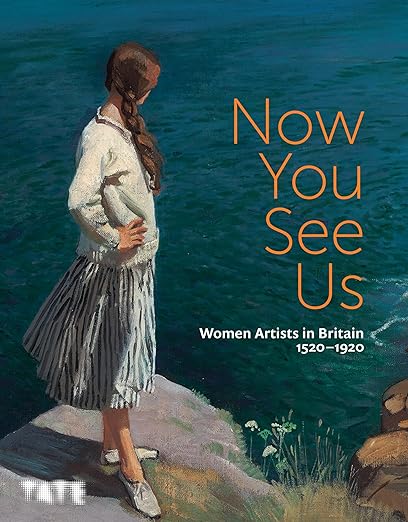
Installation shot of the exhibition, showing the position of Henrietta Rae's Psyche Before the Throne of Venus (1894) on the facing wall, and Edmonia Lewis's Bust of Christ (1870) in the right foreground. On the wall on the right is Lucy Kemp-Welch's Colt Hunting in the New Forest (1897). [Credit: Tate. Illustrations, captions and links added by JB. Click on this and the following images to enlarge them.]
A few months ago, Tate Britain provided its visitors with the unexpected treat of discovering a large unknown painting in its Victorian rooms. Psyche Before the Throne of Venus (1894) was actually known by the few connoisseurs of Henrietta Rae's work, but so far, this landmark in her career could only be accessed through a mediocre black and white photograph printed in Edwardian times. It was a delightful surprise indeed, since no one could have imagined the freshness and delicacy of the colours of this ambitious painting, in its gilded "Greek" frame similar to those used at the time by Lord Leighton. The same could be said of many a work by women artists, which have generally vanished from art history books and can only be known through poor-quality reproductions. How can one take arms in favour of those paintings if they remain invisible? And even if our museums do own a number of works by "female artists," it might do the cause a disservice to display second-rank paintings by women side by side with masterpieces by men. By its dimensions, Psyche Before the Throne of Venus may be considered the summit of Rae's career, even though it mainly attracted negative reviews ("a sort of confectionary piece … most thinly painted and meretricious… nymphs and goddess resemble ballet girls, while Venus's court is like an opera scene," F.G. Stephens in The Athenaeum, 2 June 1894, p. 716). The work resurfaced on the art market in 2017, and was lent to Tate Britain by its new owner a few years later. It is presently one of the high points of the exhibition Now You See Us, devoted to women artists in Britain from the 16th to the early twentieth century. (As a counterpoint to the place of honour now given to Rae's Psyche, it may be interesting to remind the reader that Bondage, an equally large work painted in the same year by Rae's husband Ernest Normand, was de-accessioned in 2010 by the Royal Cornwall Museum in Truro and sold to a private buyer).

Henrietta Rae's Psyche Before the Throne of Venus. [Click on this image for more information.]
Thanks to Now You See Us, it is possible to see some of the works one had read about but which remained somewhat elusive: now is the time to admire Florence Claxton's deliciously satirical painting "Woman's Work": A Medley (1861), which might soon disappear into some private collection, as it is currently offered for sale by a London art dealer. And perhaps Tate Britain should obtain from the Musée d'Orsay the permanent loan of such a great nude as Annie Swynnerton's Mater Triumphalis (1892) since it is but rarely on display in Paris. As it is, the Victorian section of Now You See Us is a strong presence, coming after several rooms devoted to the three previous centuries, where the visitor is often struck by a discrepancy between the artists' ambitions and their technical shortcomings, or disappointed to learn that a wonderfully gifted painter like Mary Black (1737-1814) could only produce one portrait in oils, simply because she was judged "saucy" and "a slut" for daring to ask half what Reynolds would have commanded for a similar work. Some painters who appear among those of the early nineteenth century might also have been included in the Victorian rooms, like the excellent Margaret Sarah Carpenter, who came into her own as a portraitist after the death of Thomas Lawrence, or such a superb watercolourist as Helen Angell, who was appointed Flower Painter in Ordinary to Queen Victoria in 1879.


Two more installation shots: The one on the left shows two paintings by Rebecca Solomon: Sherry, Sir and The Young Teacher; the one on the right shows a portrait of Barbara Bodichon by Emily Osborn. [Credit: Tate]
The first artists of renown in Britain were foreigners, and this rule also applies to women. The exhibition naturally starts with Artemisia Gentileschi, who was largely rediscovered over the last half-century. Two centuries later, when the Royal Academy was founded, one of its two female members was the Swiss Angelica Kaufmann, whose tame brand of neo-classicism now seems a bit washed out (but some of her best works might well have been requisitioned by the RA with its concurrent show). Even Maria Cosway (who is also honoured by a monographic exhibition at the moment, in Corsica) was originally Italian, and it is a great joy to admire her huge portrait of Georgiana, Duchess of Devonshire, lent by Chatsworth. While Rosa Bonheur was famous in the English-speaking world, but spent most of her life in France, England still attracted foreign painters (like the Austrian Marianne Preindelsberger Stokes) in the nineteenth century, but the main female artists in the Victorian age and afterwards were "locals."

Visitors to the exhibition admiring Angelica Kaufmann's Colours (1780). [Credit: Tate]
The Victorian section is divided into four parts, just like the catalogue, which appears as a mosaic of short essays by some two dozen writers, including such distinguished art historians as Pamela Gerrish Nunn and Jan Marsh (who had curated together one of the first public manifestations or interest for Victorian woman painters a quarter of a century ago, the Pre-Raphaelite Women Artists exhibition in Manchester and Birmingham in 1997-98), or Hope Kingsley, a specialist of Victorian photography.

Cover of the book accompanying the exhibition, featuring a detail from Laura Knight's At the Edge of the Cliff (1917).
In the catalogue, the chapters "Victorian Spectacle" (painting and sculpture), "Women and Watercolour", "Photography" and "Art School" cover the whole period from page 108 to page 173, including colour reproductions: there are no individual notices for the works themselves, but a chronological succession of short biographies of each artist in the first three chapters, "Art School" offering a more consistent narrative than the successive exploration of the diverse mediums. No attempt is made to link the different artists with specific groups or trends (the Pre-Raphaelites, Impressionism, the Aesthetic Movement), perhaps because "exclusively focusing on the emergence of modernism serves to omit many women artists, including those who had popular and successful careers," as observed by curator Tabitha Barber in her Introduction. Fortunately, more than fifty years after Linda Nochlin asked "Why Have There Been No Great Women Artists?", things have changed considerably among art historians and in the mentalities of the public: according to Pamela Gerrish Nunn, who has signed a second introduction to the catalogue, "the issue is no longer one of mere visibility but of what useful questions their work can be shown to provoke." In fifty years' time, once they are firmly established in the canon, perhaps it will finally seem unbelievable that women artists – especially Victorian women artists! – once had to be rediscovered and revalued.
Links to Related Material
- Victorian Women and the Visual Arts
- A Review of Maria Quirk's Women, Art and Money in Late Victorian and Edwardian England: The Hustle and the Scramble (by Pamela Gerrish Nunn)
- Women Artists — Art Education for Women
Bibliography
Barber, Tabitha, et al. Now You See Us: Women Artists in Britain 1520-1920. Pbk. London: Tate Publishing, 2024. 224 pp. £32.00. ISBN: 978-1849768818
Created 8 July 2024